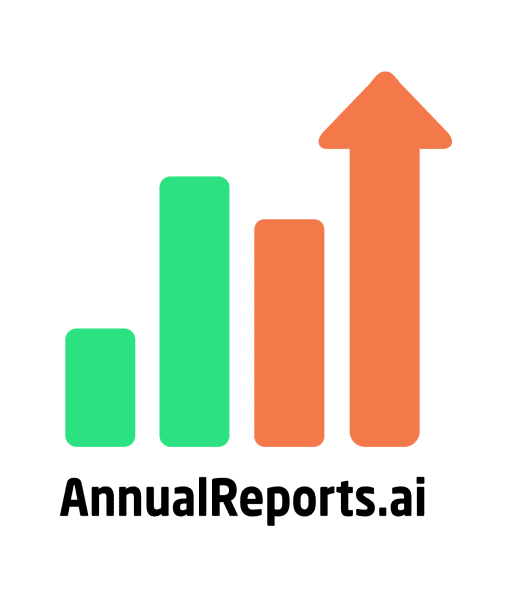An annual report is a crucial document that communicates an organisation’s financial performance, strategic direction, and key milestones to stakeholders. However, many companies make common mistakes that diminish the effectiveness of their reports. These errors can result in unclear messaging, regulatory issues, and disengaged stakeholders. Avoiding these pitfalls ensures a well-structured, compelling, and transparent annual report that aligns with best practices.
Key takeaways
| Aspect | Common Mistake | Solution |
|---|---|---|
| Structure and organisation | Lack of clear structure. | Use a logical structure with well-defined sections. |
| Data presentation | Overloading with data. | Focus on key insights and use visuals effectively. |
| Audience engagement | Ignoring the target audience. | Tailor content for different stakeholder groups. |
| Clarity | Overuse of jargon. | Use clear and engaging language to improve readability. |
| Design and readability | Neglecting design and presentation. | Invest in professional design and structured formatting. |
| Accuracy and transparency | Inaccurate or incomplete information. | Double-check financial and operational data for correctness. |
| Content balance | Focusing only on financials. | Highlight broader achievements, CSR, and company culture. |
| Efficiency | Last-minute production. | Plan ahead to ensure thoroughness and quality. |
| Storytelling | Forgetting to highlight key achievements. | Showcase successes to strengthen stakeholder confidence. |
Let’s explore the common mistakes made when producing annual reports and how to address them effectively to enhance clarity, credibility, and stakeholder engagement.
1. Lack of clear structure
A poorly organised report confuses stakeholders, making it difficult to extract key messages. A logical, well-structured layout ensures that your audience can navigate the report effortlessly.
Use a logical structure with well-defined sections
- Follow a structured layout with sections such as executive summary, financial statements, governance, and future plans.
- Use headings, bullet points, and summaries to break down content effectively.
- Ensure a logical flow from past performance to future outlook.
- Include a table of contents for easy navigation.
2. Overloading with data
Excessive data without proper summarization can overwhelm readers and obscure key insights. Many companies assume that more information equates to greater transparency, but without proper structuring, it leads to disengagement.
Focus on key insights and use visuals effectively
- Highlight essential financial metrics and key performance indicators (KPIs).
- Utilise charts, graphs, and infographics to present data visually.
- Provide detailed financials in appendices for those requiring deeper analysis.
- Use summaries at the end of each section to reinforce key takeaways.
3. Ignoring the target audience
An annual report serves multiple stakeholders, including investors, employees, customers, and regulators. A generic approach fails to engage them effectively.
Tailor content for different stakeholder groups
- Identify key stakeholder groups and tailor content accordingly.
- Use accessible language that appeals to different audiences.
- Address specific interests, such as financial growth for investors and company culture for employees.
- Create separate sections for different audience groups, ensuring their concerns are directly addressed.
4. Overuse of jargon
Industry jargon and overly technical language can alienate readers and make reports less accessible. Stakeholders may struggle to understand the company’s achievements and financial position.
Use clear and engaging language to improve readability
- Use clear, concise language to explain key concepts.
- Provide definitions or a glossary for technical terms.
- Focus on storytelling and engagement rather than complex terminology.
- Include real-world examples and case studies to make data more relatable.
5. Neglecting design and presentation
A poorly designed report can appear unprofessional and fail to capture stakeholder interest. A visually unappealing layout with dense text blocks makes reading difficult.
Invest in professional design and structured formatting
- Ensure consistency in branding, including typography, colours, and logos.
- Use a clean layout with visual hierarchy to enhance readability.
- Incorporate high-quality images, infographics, and structured formatting.
- Design an interactive digital version for online readers.
6. Inaccurate or incomplete information
Errors in financial data, dates, or key metrics can damage credibility and lead to compliance issues. Missing important disclosures can result in regulatory penalties.
Double-check financial and operational data for correctness
- Establish rigorous review processes to verify information accuracy.
- Ensure compliance with industry standards and reporting regulations.
- Rely on credible data sources and external audits where necessary.
- Use AI-powered tools to detect inconsistencies before publication.
7. Focusing only on financials
While financial performance is critical, annual reports should also highlight achievements in corporate responsibility, innovation, and company culture.
Highlight broader achievements, CSR, and company culture
- Highlight corporate social responsibility (CSR) initiatives and sustainability efforts.
- Showcase key company milestones and employee achievements.
- Provide insights into company culture and long-term strategic goals.
- Include testimonials from employees and stakeholders to personalize the report.
8. Last-minute production
Rushing the annual report process often leads to errors, lack of clarity, and a missed opportunity to make a strong impact. Companies that treat it as an afterthought risk producing subpar reports.
Plan ahead to ensure thoroughness and quality
- Develop a clear timeline for content creation, design, and review.
- Allocate responsibilities across teams to streamline production.
- Use AI-powered technology to automate annual report generation and improve efficiency, like AnnualReports.ai.
- Conduct early drafts and review cycles to refine messaging.
9. Forgetting to highlight key achievements
An annual report should celebrate successes and recognize key contributors to the company’s growth and innovation. Without this, the report may feel overly technical and uninspiring.
Showcase successes to strengthen stakeholder confidence
- Dedicate sections to notable accomplishments, growth milestones, and success stories.
- Use case studies and testimonials to showcase impact.
- Align achievements with the company’s strategic vision to reinforce credibility.
- Highlight customer success stories to demonstrate the company’s value proposition.
Conclusion

Avoiding these common mistakes enhances the clarity, credibility, and impact of annual reports. By structuring reports effectively, tailoring content to stakeholders, ensuring accuracy, and leveraging professional design, organisations can produce engaging and transparent reports.
By planning ahead and utilising AI-powered solutions, businesses can simplify report creation, reduce manual effort, and ensure high-quality, compliant reporting. Elevate your annual reports today and deliver compelling narratives that resonate with stakeholders.

